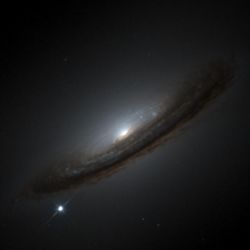High-Z Supernova Search
Table of ContentsThe Expanding Universe
The Fate of the Universe
Supernovae
Type Ia Supernovae [1] [2] [3]
Searching for Distant Type Ia Supernovae
Search Results
Search Conclusions
Type Ia Supernovae
Type Ia Supernova are the explosions of white dwarfs.White dwarfs are stellar cores that have ceased fusion. Ordinarily, they simply cool for the rest of time. However, white dwarf in binary systems can grow in size by accumulating more material from their companion stars. It is these that produce Type Ia supernovae.
All the details have yet to be fully worked out, but we know the basics. Chandrasekhar, who was awarded a Nobel Prize in Physics for his work, established in 1934 that gravity condenses the cabon and oxygens atoms of a white dwarf to an extremely dense form of matter. The atoms are held apart by the atomic force of electron degeneracy which prevents the further collapse of the core. However, if the core becomes more massive than 1.4 solar masses, the atomic forces can no longer withstand the force of gravity. The white dwarf begins to collapse. The heat and pressure generated by the collapse triggers the fusion of the Carbon and Oxygen and the sudden release of enormous amounts of energy. The result is nuclear blast wave that consumes the star in a second and produces an explosion that is 10 to 100 times brighter than Type II supernovae.

SN 1994D observed with the Hubble Space Telescope. The SN is the bright star in the lower left corner.

